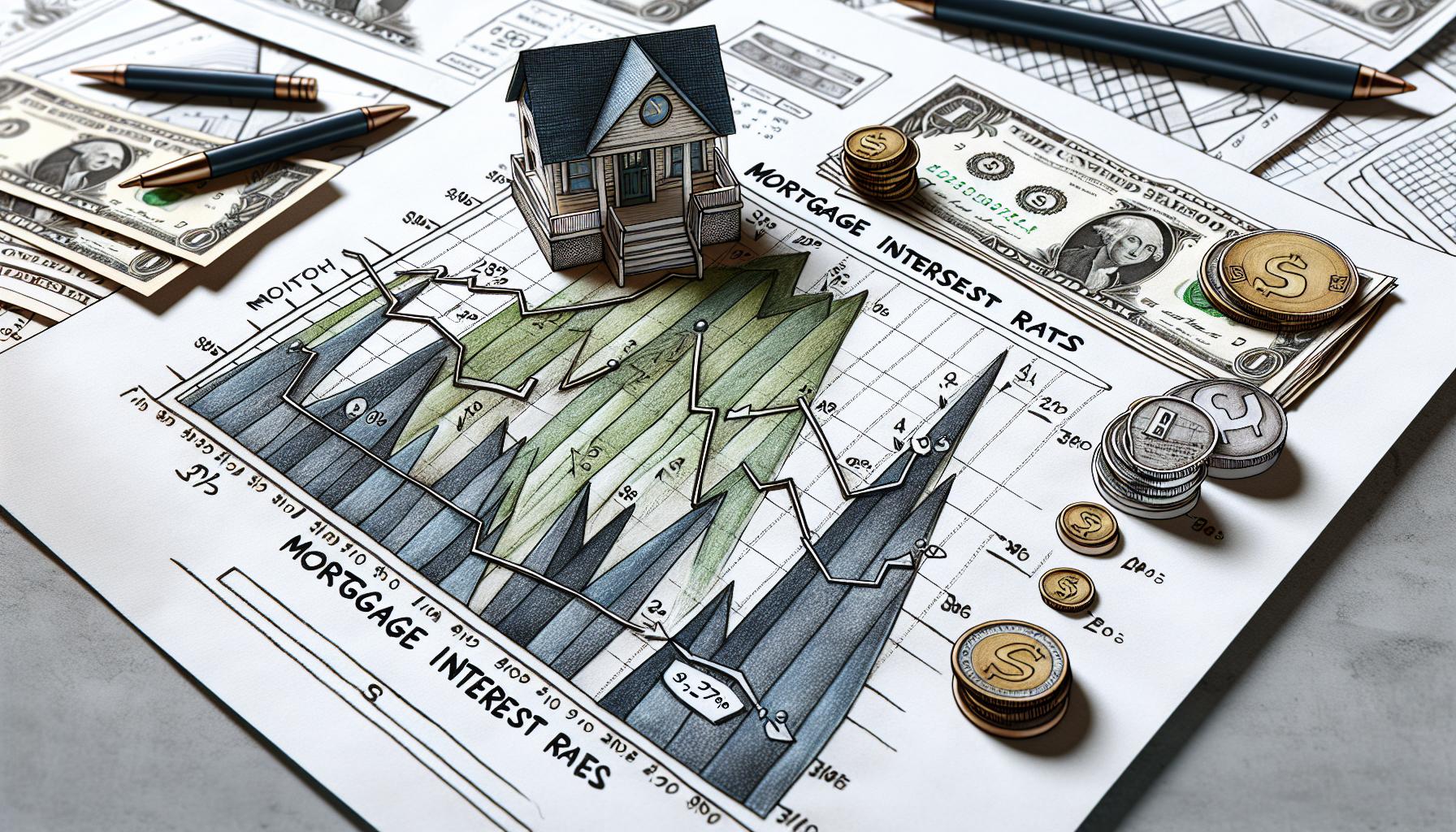Getting to grips with mortgage interest rates is essential for anyone planning to buy a home, refinance, or manage existing mortgage payments. In the United States, mortgage interest rates are influenced by a range of factors. These can be split into external market conditions and individual borrower traits. I’ll provide some insights on how these rates work, equipping you with the knowledge to make smart financial choices.
Factors Influencing Mortgage Interest Rates
- Economic Indicators and Market Conditions: Macroeconomic factors like inflation, employment rates, and monetary policy primarily dictate mortgage interest rates. When the economy grows strongly, credit demand rises, pushing interest rates up. During economic slowdowns, rates often drop to encourage borrowing and spending. The Federal Reserve influences these rates through policy decisions. Changes in the federal funds rate lead banks to adjust their prime rates, indirectly affecting mortgage rates. Typically, when the Fed raises rates to counter inflation, mortgage rates follow suit.
- Type of Loan: Your loan’s structure significantly impacts your mortgage interest rate. There are mainly two types of mortgages: fixed-rate and adjustable-rate mortgages (ARMs).
- Fixed-Rate Mortgages: These loans offer a stable interest rate throughout the term, usually 15 or 30 years. Their predictability makes them popular, providing certainty on monthly payments.
- Adjustable-Rate Mortgages (ARMs): ARMs usually start with a lower rate than fixed-rate mortgages. However, their rates can adjust at specified intervals, potentially increasing if market rates rise.
- Loan Term: Shorter-term loans often have lower interest rates than longer ones. A 15-year fixed-rate mortgage might have higher monthly payments than a 30-year option, but the lower rate and shorter term can cut the total interest paid over the loan’s life.
- Credit Score and History: Your credit score plays a key role in determining mortgage interest rates. High scores often lead to lower rates due to reduced risk for lenders. Those with lower scores might face higher rates, so improving creditworthiness can be crucial before applying.
- Down Payment and Loan-to-Value Ratio (LTV)A large down payment can lower the interest rate by reducing the LTV ratio. Lenders consider lower LTV ratios less risky, thus offering better rates. Putting down 20% or more can often secure the best terms.
Understanding the Annual Percentage Rate (APR)
The Annual Percentage Rate (APR) offers a full view of borrowing costs, including the interest rate and other loan-related expenses like mortgage insurance, closing fees, and points. Comparing APRs gives a clearer understanding of the overall financial impact of a mortgage.
Strategies for Securing a Lower Interest Rate
- Improving Creditworthiness: Bolster your credit profile for the best rates. Regularly check your credit reports, fix errors quickly, and keep credit card balances low. Over time, these actions can boost your credit score.
- Shopping Around: Mortgage rates can vary greatly between lenders. Get quotes from multiple sources, looking at both rates and fees, to find the most affordable option.
- Paying Points: Mortgage points, a form of prepaid interest, reduce your rate. One point equals 1% of the loan amount, cutting the rate slightly. This can be beneficial if you plan to stay in the home long-term.
- Increasing Down Payment: Save for a bigger down payment to lower your LTV ratio, reducing lender risk and helping secure a better rate.
- Choosing a Shorter Loan Term: A 15-year fixed mortgage can offer a lower rate, decreasing overall interest despite higher monthly payments.
Locking in Your Rate
Consider a rate lock to secure a specific rate for a set period. It protects against rate increases between approval and closing, which is valuable if rates fluctuate.
Conclusion
Grasping how mortgage interest rates are determined can shape your financial strategy for buying or refinancing a home. By understanding the factors that drive these rates and using tactics to secure favorable terms, you can make informed decisions that fit your financial goals. Knowledge empowers you to handle mortgage interest rates with confidence and skill.
For more detailed information, visit the full article at Investopedia.

